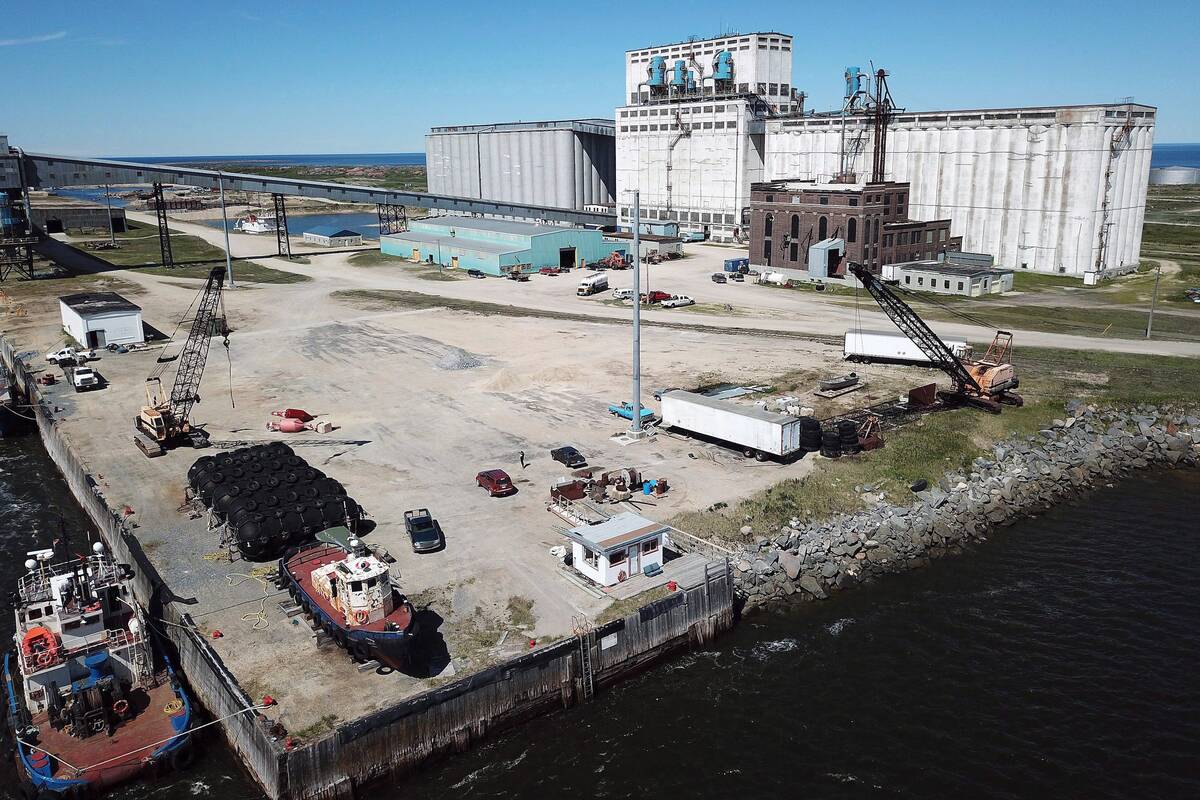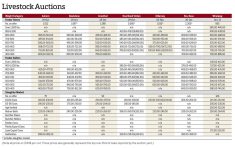Market analyst Bruce Burnett says he’s officially in uncharted territory.
As director of weather and crops information for MarketsFarm (a division of Glacier FarmMedia) and an experienced market analyst, he’s used to seeing the effect of war on grain markets.
But this time, things are different, as Ukraine and Russia square off in what is beginning to look like it may be a prolonged conflict.
“As an analyst, I’ve never been through a war where both combatants are major ag exporters,” Burnett told a recent online markets webinar hosted by MarketsFarm.
Read Also

Sizing up Port of Churchill expansion challenges
The Port of Churchill has some hurdles to clear before it can become the sea trade powerhouse for Manitoba and Canada that governments and the agricultural industry hope it will.
“It’s really impossible to predict. Yesterday peace seemed to be on the horizon and the markets sold off. Today, with a few words from the Kremlin, it’s off the table and the markets have rebounded.”
Ukraine is such a large wheat producer and much of its richest grain-producing land is now within the war zone.
Burnett said he’s not expecting any quick resolution to the situation.
“Peace is going to be a hard thing in the region,” he said. “It’s hard to read what’s going to happen, but the effect on agriculture, the disruptions of exporters, is going to last longer than the markets expect.”
While Ukraine produces mainly soft wheat compared to the CWRS that makes up much of Canada’s exports, the lack of exports from that country will affect the grain market over all.
“They’re about a third off,” Burnett said. “Right now they’re sub-20 million tonnes and they shipped 33 million tonnes last year. Obviously, they’ve got other things on their mind than exporting grain.”
Burnett said he expects Russian wheat exports to also be off, but due to sanctions that will disrupt trade, rather than because production has fallen.
Weather woes
The war in Ukraine is just the latest issue that has sent markets upwards. Already they were eyeing falling stocks after weather issues last season, and continued weather uncertainties in a number of major production areas including Latin America and the U.S. Wheat Belt.
A big part of that uncertain weather has been due to a strong and persistent La Niña pattern.
“It gave us a bit of a head fake in the past couple of months,” Burnett said. “It looked like it was waning in January, but then came back stronger.”
That weather pattern has resulted in a major drought in southern Brazil and Argentina. For Western Canada it’s made for the “classic” La Niña winter producers have seen across the Prairies.
“Precipitation in most of the Parkland area has been above normal,” Burnett said. “The central and southern Prairies have been either drier than normal or close to normal, depending on what part of the Prairies you are in.”
It’s considered a classic pattern because La Niña typically pulls weather systems down out of Alaska, causing them to track over the Parkland region. As warmer weather begins to erode the snowpack, much of Alberta and parts of Saskatchewan are facing a spring with little subsoil moisture recharge, Burnett said.
The situation in Manitoba is a bit brighter, but is still going to depend on the right melt, which allows for the water to infiltrate the dry soil.
“We still have a deficit, our only hope is a slow, steady melt,” Burnett said.
For much of the Prairies, timely rains in the spring are going to be more important than ever.
The various production setbacks globally have combined into a situation that has bitten into wheat supplies over the past couple of years, Burnett said. That’s especially pronounced in the grain-exporting regions. While production in Canada is expected to rebound somewhat after the drought, the decreases in Ukraine will more than offset the gains.
“There will be some increase in production, but it’s still going to drop ending stocks next year down to levels very similar to the 2008-09 marketing year,” Burnett said.
Following trends
Analyst Mike Jubinville, of MarketsFarm Pro, delivered an update on oilseed markets during the same webinar.
He painted a similar picture of volatility.
“It can be fun, it can be scary,” he said. “It all depends on what day, or even what hour, you’re looking at these markets.”
He said the world is on a similar trend to tighter vegetable oil stocks, and prices are following the trend upwards.
“The trend is our friend, for the time being,” he said.
Canola might seem overpriced as it bounces around the $24- or $25-per-bushel mark, and its relationship with soy is out of balance, he said. But he added that there were factors supporting this price.
“The canola basis is at record high, so demand is also at a record high,” he said.
He also noted that it’s only $100 per tonne over the price of oilseed rapeseed in Europe, and a premium as high as $80 to reflect the cost of shipping isn’t unusual.
“It’s going to be due for occasional corrections, but it’s not overpriced,” Jubinville said. “I would consider doing some forward contracting, but only dipping your toes in.”
As for cash prices, what’s typically the best window for the canola market — early April to mid-June — is fast approaching.
“Historically we would see some of our strongest prices for canola in this time, during a normal year,” Jubinville said. “This isn’t a normal year, and it’s anyone’s guess what’s going to happen. It’s going to be an interesting market to watch going forward.”
That market uncertainty is weighing on farmers who are facing a spring with uncertain production prospects, high input costs and a volatile market. It makes pricing crops through forward contracting a high-risk venture with the usual trade of price risk for production risk looking a bit less attractive.
Colin Penner, who farms near Elm Creek, told the Co-operator he’s a bit more reluctant to price his crop than in past years. He had to buy out a winter wheat contract last year after it didn’t survive the winter.
“That kind of left a bitter taste in my mouth,” he said.
He says the farm is slower than has been to price new crop. Ordinarily by Christmas they’d have sold between five and 10 per cent of the coming crop, but this year they hadn’t sold any, as they weighed the potential upside and downside of contracts.
Robert Brunel, who farms near Ste. Rose du Lac, said he’s watching markets very closely as he considers his forward contracting options.
“I wouldn’t say reluctance,” he said. “Maybe I’m more conservative on my forward pricing right now just because we still see new-crop prices climbing.”
He said he’s aware of some good pricing, and is considering the opportunities to use price hedging strategies to capture some of those, while limiting some of the downside risk and delivery risk, something that’s top of mind after a tough production year. His farm didn’t have to buy out any contracts, but it was nip and tuck.
“We met our contracts but we didn’t have a lot extra for sure,” he said.
— With files from Geralyn Wichers
















